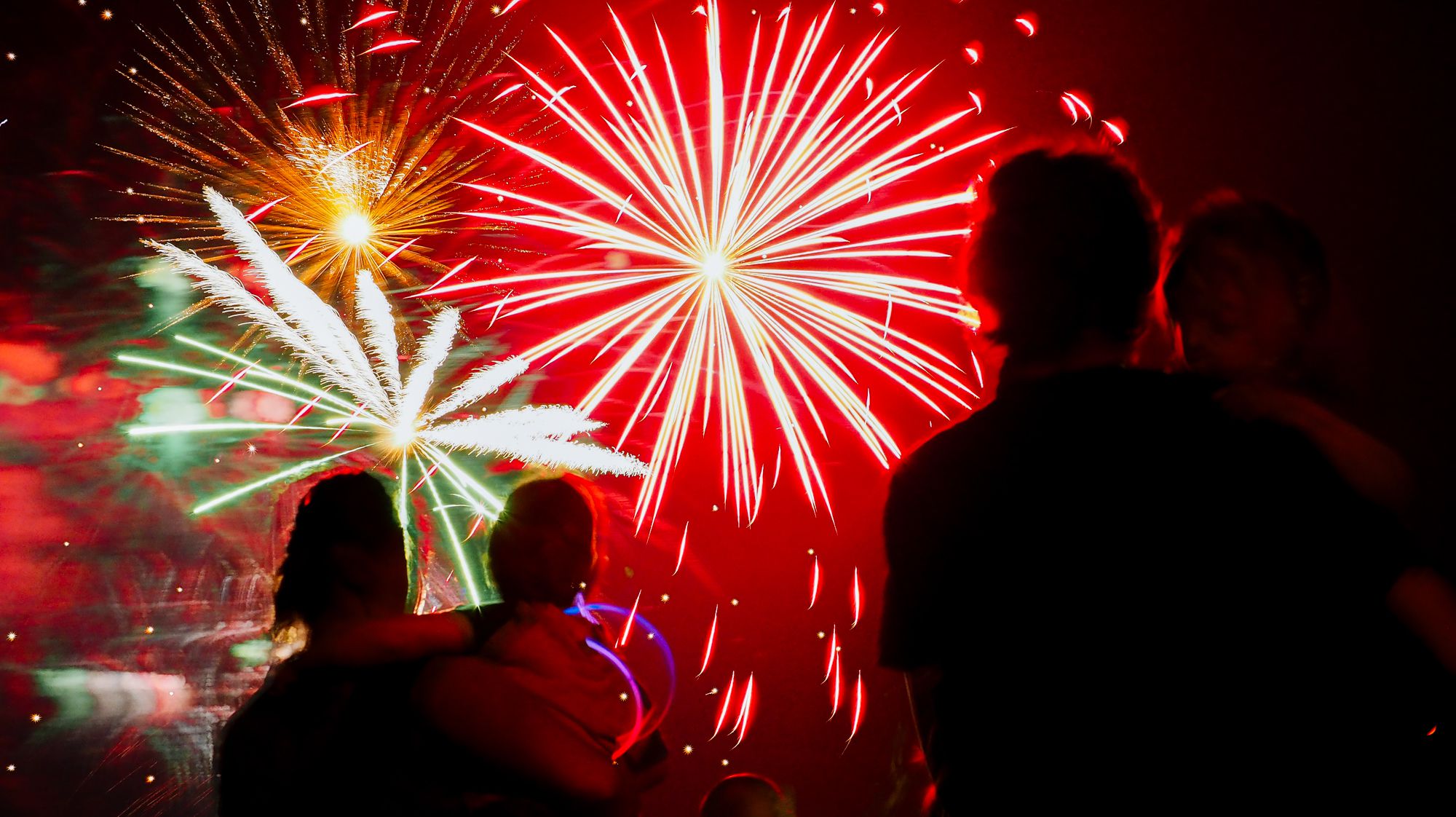Olympus often brags about its simple-to-use night and astro photography feature built into its OM-D cameras. If you’re into light painting, or long exposures of the night sky, Live Composite claims to be the feature for you.
Live Composite allows you to find your spot, set the aperture, hit the shutter, and watch your long exposure shot grow in real-time.
Once the shutter fires, the camera takes over and shoots photos until you hit the shutter button a second time. The camera then takes the photos, super-imposes them on top of each other, and gives you a perfectly exposed long exposure shot.
I had to try out this feature last night during some Canada Day festivities.

Jac and I sat a little close to the light show, but it was fully immersive and full of fun. I carried along the Panasonic Leica 25mm Summilux f/1.4 lens to shoot the scenes, but I quickly found we were a little close for the lens’ reach. If I could do this project over again, I’d go with a slightly wider lens to capture the full firework.
Regardless, I think the results turned out well for my first time.

Setting up Live Composite is fairly easy.
- Set the camera to Manual.
- Scroll your shutter speed dial to the left until you find LIVECOMP mode.
- Set your aperture to f/8.0.
- Fire the shutter (as per the onscreen instructions) to ready the camera.
- Fire the shutter to begin capturing the scene.
- Fire the shutter to finish capturing the scene.
As the camera captures images, you can see the image onscreen and watch it grow to the image you’re looking for. It’s a very cool experience and greatly reduces the difficulty in capturing a properly exposed long exposure shot.



As the pre-fireworks show grew at the lake, I found it increasingly difficult to find a spot to shoot these Live Composite photos. As you can see, people found their way into every photo.
At first, this annoyed me to no end.
But I quickly found the people added a humane element to the photos. Of course, their movement can’t be captured perfectly by the Live Composite mode. However, a slightly blurry person (I feel) gave a pretty unique result.

I had to be very careful not to let the camera capture too much light. If I waited too long, I would be met with a perfectly black background and a single, giant ball of light in the middle of the image. If I didn’t give the camera enough exposure time, I would be left with short bursts of light that didn’t look anything like a firework. As much as it was a test of a new feature on a modern camera, it was also a test of timing.

These last two images have made their way to the top of my favourites list.

The silhouette of the mother and young boy fit the evening perfectly. It was a great family celebration of a country built to be the best place to raise a family.
As I said earlier, I believe these images would have been better had I had a wider lens. Even 15mm would have been sufficient for capturing more of the fireworks.
Either way, the result will be finding its way into my yearly photobook.
Happy (belated) Canada Day.